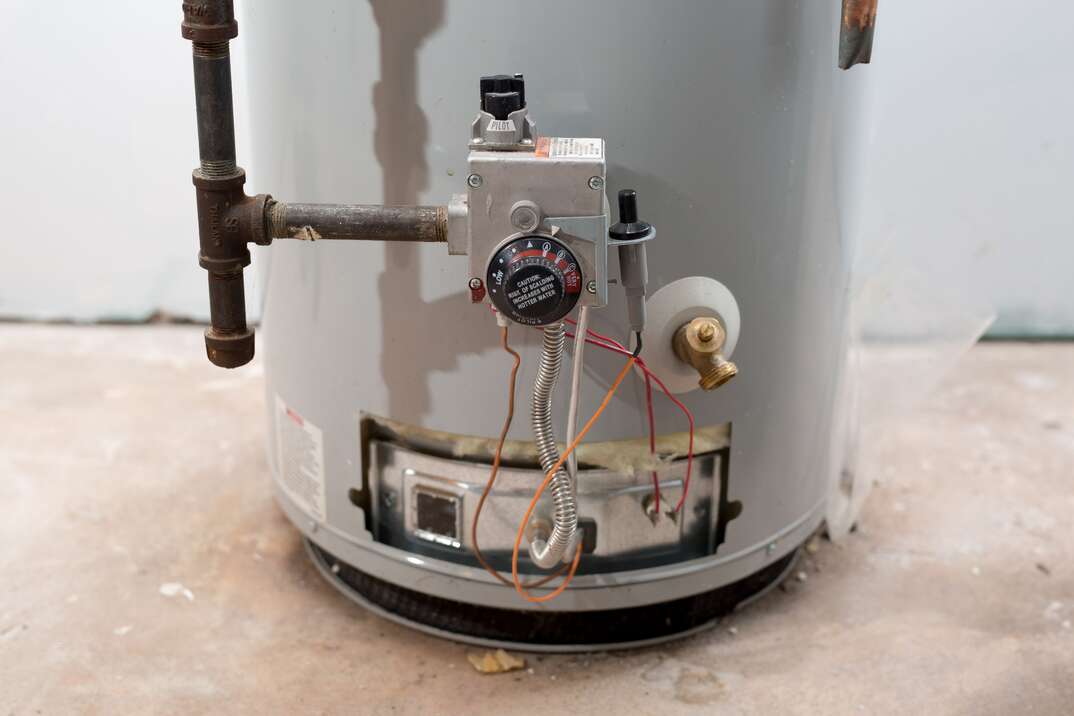- AppliancesElectriciansHVACLandscapingLocksmithPest ControlPlumbingRenovationRoofingT V RepairAll Home Improvement
- Car AccidentClass ActionCorporate LawCriminal DefenseDivorce LawEmployment LawFamily LawFinancial LawLegal AidMedical Injury LawyersMedical MalpracticeReal Estate LawWater Fire RestorationAll Legal
- InvestmentRetirementAll Finance
- Animal InsuranceAutoGeneral InsuranceHealth PolicyHome RentersAll Insurance
- DentalHealth SpecialistsAll Medical
- Animal CareVeterinaryAll Pets
- Auto GlassTowingAll Automotive
What Does a Water Heater Pressure Relief Valve Do?

Welcome to the world of water heaters, where a small but mighty hero stands guard: the pressure relief valve. Think of it as the guardian of your hot water tank, making sure it doesn't become a safety risk.
Let’s look at what the water heater pressure relief valve is, where you can find it and how it helps you and yours enjoy a safe supply of hot water.
A water heater pressure relief valve is a safety device that prevents your water heater from exploding or leaking due to excessive pressure or temperature. It has a lever you can manually open to release some water and lower the pressure.
The valve also opens automatically when the pressure or temperature inside the tank exceeds a certain limit, which is typically 150 psi or 210 degrees Fahrenheit (99 degrees Celsius). It does this to protect your water heater, plumbing system and home from potential damage.
Where Is the Relief Valve Located?
The relief valve is usually located on the top or side of the water heater tank near the cold water inlet pipe. It’s connected to a discharge pipe that leads to a drain or outside the house.
The water heater pressure relief valve works by sensing the pressure and temperature inside the tank. It has a spring-loaded mechanism that opens the valve when the pressure or temperature exceeds a certain limit. This allows some water to escape from the tank. The valve closes automatically when the pressure and temperature return to normal.
The water heater pressure relief valve can also be opened manually by lifting its lever. This is useful for testing the valve or releasing some water to prevent sediment buildup. However, you should be careful when doing this, as the water released can be very hot. You should also make sure the discharge pipe is clear and directed to a safe location.
More Related Articles:
- Calling a Plumber? Here Are the 6 Most Common Plumbing Jobs and How Much They Cost
- 6 Ways to Try to Unclog Your Sink Before You Call a Plumber
- What's in My Plumber's Van?
- Here's How Much It Costs to Remodel a Bathroom
- 6 Tips for Hiring a Plumber
Why Is a Water Heater Pressure Relief Valve Important?
The valve is a crucial safety feature. If the pressure or temperature inside the tank gets too high, it can rupture or explode, potentially causing serious damage to your home and injury to anyone in it.
This scenario can happen for various reasons, including:
- A faulty thermostat not regulating the temperature properly
- A malfunctioning heating element overheating the water
- A closed or blocked water supply valve trapping the water inside the tank
- A clogged or frozen discharge pipe preventing the valve from releasing water
- A buildup of sediment or minerals reducing the tank capacity and increasing the pressure
A water heater pressure relief valve prevents these scenarios by releasing excess pressure and temperature before they reach dangerous levels. This way, it can save your water heater, your plumbing system and your home from costly repairs and replacements.
How Do You Maintain a Water Heater Pressure Relief Valve?
Although it’s a simple device, the valve requires regular maintenance to ensure it functions properly.
Here are some tips on how to maintain yours:
- Test it at least once a year by lifting the lever and checking if water flows out of the discharge pipe. If the valve doesn’t open or close properly, or if there’s little or no water, it may be faulty or clogged.
- Replace the valve every three to five years, or as recommended by the manufacturer, even if it seems to be working fine. Valves can wear out or corrode over time and fail to operate when needed.
- Inspect the valve and discharge pipe regularly for signs of leakage, corrosion or damage. If you notice any problems, contact a professional plumber to fix them as soon as possible.
- Don’t tamper with the valve or its settings. It’s calibrated to open at a specific pressure and temperature, so altering it can compromise its performance and safety.
- Don’t plug or cap the discharge pipe. The pipe must be open and clear to allow the water to flow out of the valve.
Elocal Editorial Content is for educational and entertainment purposes only. Editorial Content should not be used as a substitute for advice from a licensed professional in your state reviewing your issue. Systems, equipment, issues and circumstances vary. Follow the manufacturer's safety precautions. The opinions, beliefs and viewpoints expressed by the eLocal Editorial Team and other third-party content providers do not necessarily reflect the opinions, beliefs and viewpoints of eLocal or its affiliate companies. Use of the Blog is subject to the
Website Terms and Conditions.The eLocal Editorial Team operates independently of eLocal USA's marketing and sales decisions.



